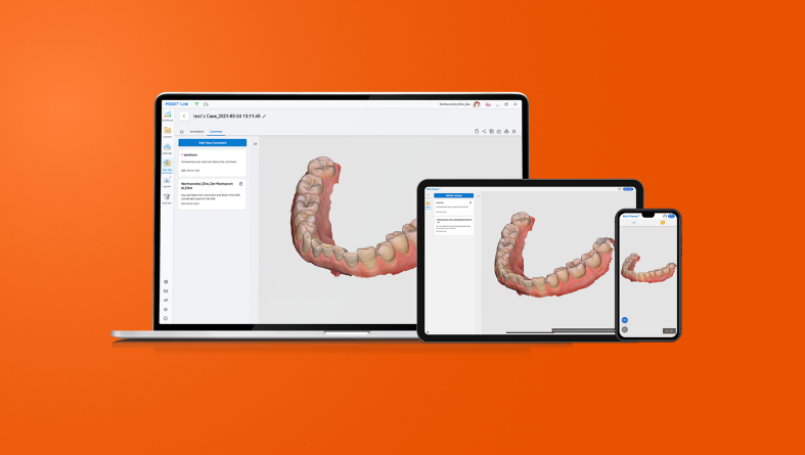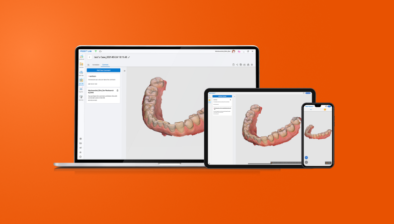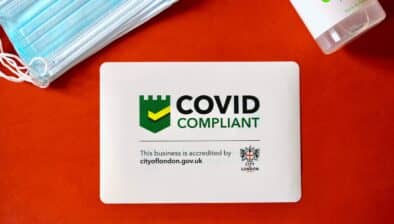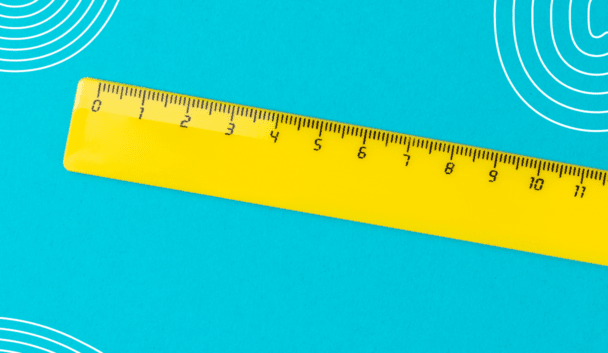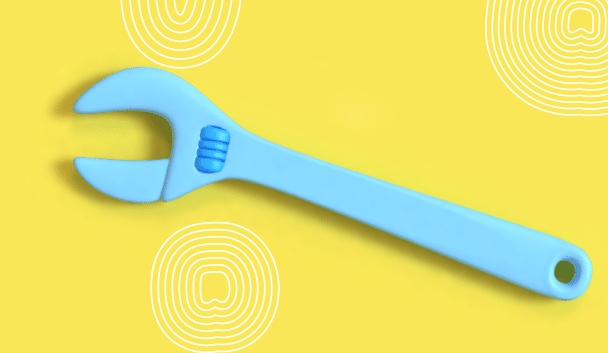Google Rating
5.0 5.0

Sean Hamil
16:59 31 Jan 25
I have been a patient of Dentistry 100 for around ten years. The care provided has been consistently excellent. Many thanks to Andrew Parkman and Hayley Azzopardi for looking after me so well.

Natasha Herman
13:36 21 Jan 25
Fantastic service from the hygienist, Hayley, to the dentist, Dr Andrew Parker. They made me feel very comfortable throughout my treatments and provided valuable aftercare advice. I did not feel any pain during my procedure! This was my first time visiting the practice, and I won’t go anywhere else again. A big thank you to the lovely reception team, who were extremely professional and friendly.

Edmund Banya
16:54 14 Jan 25
I’ve been coming to Dentistry100 since 2017, very friendly staff and always very helpful. Hayley is the best hygienist in London!! If you always want a thorough clean, alongside interesting conversations, make sure to visit Hayley :)

Eugenie Lim
11:39 21 Dec 24
At Dentistry100 you will find a calm & friendly atmosphere, seamless teamwork, and consistent professionalism. Dr Saagar Patel demonstrates an abundance of knowledge, skills, and care. Few people or places score 5 stars in my mind but I do not hesitate with this review.

Sian Emmison
09:25 11 Dec 24
So happy to have found Dentistry 100, who were recommended by a friend. Sagaar Patel is super kind and friendly. The clinic has a very calming atmosphere.

Lorraine Slattery
22:04 29 Nov 24
I have been under the care of Andrew Parkman and Hayley Azzopardi for the past 15 years. They have always shown me exceptional personalised care, expertise and kindness and transformed my teeth and gums from a woeful start, with intense treatment required, to low maintenance regular check ups and, rarely, some minor interventions. I no longer work near the surgery but take the trouble to still travel in to enjoy the continuity & high standard of care. Where else do you see the same people for 15 years?! Highly recommend!

diane o'connor
12:31 20 Nov 24
I have been treated by Sagaar Patel at Dentristy 100 since I was an NHS patient at Imperial College many years ago. His treatment and care was so impressive (for this very nervous patient) that I switched to his private practice. Insuring his patients are relaxed, and attention to detail are just two of his priorities. I cannot commend his work more highly.

harriet logan
16:12 09 Aug 24
THE BEST DENTIST IN LONDON. I have been going here for maybe 13 years now. Andrew is wonderful and Hayley has kept my near 60 year old teeth perfect. THEY KNOW what they are doing. They are utterly kind and personable and Id trust them with my children.... In fact... I do.

Lou Wint
11:16 22 Jul 24
Dr Sagaar Patel has been my dentist for a number of years. I'm old and all I can say is that his work on my teeth has been life changing. For decades I had dental problems especially with my front tooth that looked awful and seemed to get worse with every visit to the dentist. Dr Patel worked on this tooth and now it looks completely normal. I no longer need to keep covering my mouth and can smile freely. My other teeth are also the best they have been in many years. Dr Patel is patient, professional and is the best dentist I have ever had.

-ce L
13:47 18 Jul 24
I've been seeing the team at D100 for dental check ups and routine care for c. 10 years and I have always received outstanding care. By far the best practice I have seen in over 40 years.

Anna Campeau
11:26 07 Jul 24
This place was recommended to me by friends as I was experiencing on-going issues with my teeth & mouth. I had a great consultation with thorough check up. I felt heard & will return to complete the work.

Mansi Bhardwaj
16:03 03 Jul 24
Went for wisdom tooth pain. Absolutely loved the treatment given and th staff was very respectful and friendly.Office is well furnished and is extremely cleanHighly recommend!

Jessie Taslim
20:02 01 Jun 24
My brother had his Invisalign done with Dr. Saagar and highly recommended him to me. Dr. Saagar explains everything clearly and thoroughly, and the entire team is incredibly welcoming and friendly!As someone who always gets anxious about going to the dentist, Dentistry100 completely changed my perspective. The office is clean and modern, and I had a positive experience. I highly recommend Dentistry100 to anyone seeking top-notch dental care!

Tamara Gervasoni
17:26 27 Mar 24
What can I say? Dr Patel is hands down the best dentist I have ever come across. Approachable, knowledgeable, meticulous, understanding and incredibly skilled. He actually makes every visit a joy.Hailey, the hygienist, is also outstanding.Anca, the receptionist, is always happy, accomodating, and so lovely to deal with. In summary, I highly recommend Dentistry 100. You will not be disappointed.And, thank you again to Dr Patel.

Richard Baird
16:33 20 Feb 24
Exceptional level of care from the moment I arrived. Very modern and spacious place with personable management and reception staff. My hygiene appointment with Haley was pleasant and painless. I was given a numbing gel, a first for me, which showed an extra level of care and consideration. Haley was polite and cheerful. I'd certainly recommend this practice to friends and family.

Alexander May
21:19 18 Feb 24
2nd visit with Hayley, best thing I've done for my teeth health. Would highly recommend and will continue to visit

Ivana Zazzera
15:45 14 Dec 23
Ive known Dr Patel for a good few years now and will only ever go to him for dental treatment: he fully has the patient’s best interest at heart and tailors his approach so for eg he is extra delicate as I have highly sensitive teeth with a variety of problems.My treatment has always been the best it could be, within a warm and friendly environment . He is, without a doubt, a true professional.Practice: new, very spacious, quiet and exceptionally clean: they are very rigid in pre and post room cleansing and have the correct PPE equipment.Location: less than 5 min walk from either Barbican or Farringdon station, very easy.

LadyDiva X
14:48 14 Dec 23
This practice is fantastic. After 50 years of dentist-phobia I felt this was a place I can finally relax & these days I look forward to my appointments. The surgery is spotless & all the staff are welcoming, friendly & highly professional. I would recommend this place 100%.Update: Well as you can see I still visit Dentistry100 & still look forward to my visits. Haley the hygienist is fantastic I would still recommend this practice 100%.

Deborah L
11:01 09 Dec 23
I have been seeing Hayley for years !! She is the best hygienist in London ! With her advice and wonderful care, I have had no fillings !! Love my visits !

Fuzz buzz
12:10 01 Nov 23
I went to this dentist on a friend's recommendation. I had previously received dental care through the NHS, but their service was terrible, so I decided to switch to a private dentist. My dentist, Meera, is incredibly kind and caring. She takes great pride in her work, and her top priority is looking after her patients, which is evident through her compassionate approach. She's one of the best dentists I've ever had, and it's clear that she's motivated by a genuine concern for her patients' dental health rather than just making money. She has always been there for me and made appointments when I needed urgent advice. I can't find any faults with her, and I would wholeheartedly recommend this dentist to anyone seeking help with their dental and gum health. The practice is really nice and clean and has very friendly welcoming receptionists.

Drury Porter Eyecare Optician
10:24 26 Oct 23
Customer service is key to any successful business and i must say Dentistry 100 is exeptional. I own a business and i know how important this is.My daughter has been attending this clinc for her Orthodontic treament, Dr Padhani is gentle and very professional. My daughters teeth look amazing. The staff are freindly and very kind. I would reccomend dentisry 100 to everyone.

Gordon Hay
18:02 19 Sep 23
Been coming here now for 20 years - always excellent service and thoroughly trustworthy dentists and hygienists. As a medical practitioner I have always been hugely impressed with the quality of care. Seeing Hayley the hygienist now for the same amount of time - she has managed to keep me away from dentists that whole time. No major dental work and zero fillings since I've been seeing her. Cannot recommend too highly.

Zoë Molyneux
09:51 30 Jun 23
I'm quite sparing with reviews but wanted to write this one as Saagar and the whole team are wonderful - they have transformed my experience of going to the dentist. They are all super friendly and efficient and more importantly are kind: no shaming conversations here, just honest conversations about what is best for you and your dental care.

Jennifer Walker
14:40 20 May 23
Been coming here for many years and wouldn't go anywhere else. All the staff extremely professional and friendly. Do a great job of putting me at ease as I can be a bit of an anxious patient at times.

Gerald Goh
10:57 12 Apr 23
I've been to this dental practice twice now for routine check up and cleaning, and both times the whole experience has been really positive and easy. My email request for an appointment was responded to on the same day during a bank holiday weekend, and the invoice and payment receipt was automatically emailed after the visit. The staff here are very professional and the clinic is modern and clean. I definitely feel like my dental health is in good hands!

Charlotte Myhrum
12:46 21 Mar 23
My dentist is Andrew Parkman who is gentle, conscientious and keeps me entertained with chat while he works. I’ve had enough work done by him to know that he is careful to make it as painless as possible. Hayley Azopari is a great hygienist! She too is thorough and conscientious and has help me to keep a healthy mouth full of my own teeth. I recommend them both and feel confident that I am getting great care.

lady myms
07:19 03 Mar 23
Dentistry100 is in my opinion the best dental practice in central London. The level of care I receive whenever I go for treatments is totally awesome. I have been a patient there for many years now - Hayley (hygienist) and Andrew (dentist) are brilliant. I mean not only they look after me but they truly make me laugh so much that I feel very comfortable and at ease. I would not go anywhere else. I definitely recommend this dental practice. Anca is absolutely wonderful.

Ma-rayam Monrow
11:02 16 Feb 23
Great experience. The receptionist was very friendly and helpful..helped me see the dentist after just walking in without appointment... Bothe dentists that related me we very attentive, respectful and were genuine...great looking practice. Calm ambience. Great practice..

Fabiana Cogo
09:26 24 Jan 23
I went there for a checkup with Sagaar and and a hygiene session with Hayley.Their kindness and they’re professionalism is all you need to make the dentist experience almost something to look forward to.I will never go elsewhere.Thank you so much!

Jacqueline Palmer
16:58 18 Jan 23
I had my first visit to Dentistry100 yeterday, and was pleased to find a very friendly and relaxing atmosphere at the clinic. I had a consultation with Dr Saagar Patel who gave my teeth and gums a very thorough examination and spent a lot of time discussing my concerns and suggesting various treatment options without being pushy. Many thanks Jackie

Tim Brewer
14:58 11 Jan 23
My wife has suffered a problem with a tooth for a long time. She is very nervous of the Dentist. I managed to he her to go to Dentistry 100. They were turely amazing. So much care and finally had to have the tooth out. Reassuring her all the time. I am sure I will be able to get her to go again easily.Thank you dentistry 100

dotan zegerman
12:04 30 Nov 22
This clinic is absolutely outsatnding.From the people at the reception through the amazingHygienist Hayley, and the fantastic doctor Andrew Parkman,All giving you an absolutely caring and gentle experience.I will never go anywhere else... !

AnneR
18:26 15 Nov 22
Excellent service provided by both dentist and hygienist, very friendly practice. I’ve been a patient with them for years and would thoroughly recommend them.

Sophia Doe
11:14 31 Aug 22
As a nervous patient who had put off going for a number of years, I recently had 4x procedures completed over 6 weeks (hygienist, extraction and fillings) at Dentistry100, and I couldn't be happier with the experience and results.Meera and her assistant immediately put me at ease for the hygienist and fillings procedures. They carried everything out both professionally and to a very high standard, whilst also remaining gentle. Andre carried out the extraction and is obviously an expert in his field - extremely efficient! His assistant was also very caring and reassuring. Anka the receptionist is also a dream to deal with. All in all I highly recommend!

Lester W
14:08 26 Aug 22
Directly across the street from the Elizabeth line Barbican exit is Dentistry 100. Great team who really care and take their time with you. If you're looking for a new Dentist, this is the place!

Sander Heinsalu
17:18 18 Aug 22
Cannot comment on the most important aspect: how long the tooth repair lasts. They don't accept NHS patients if I remember correctly - you pay out of pocket. Fillings start at 200 GBP.The minor aspects were all good: Dentistry100 was clean, the people were professional and friendly, the tooth was quickly and painlessly fixed and looks like before the damage.

Sana
21:12 12 Aug 22
Hayley! Is the best hygienist ever! You are amazing, thank you for healing my gums/oral health and also educating me on gums/teeth you really have saved my gums and teeth! The team here are amazing, Hayley is honestly the best here - friendly, professional and the best! Thank you for always putting me at ease and giving me the best advice ever, couldn’t have done it without you. Would reccomend 100% coming here as NHS practices really didnt help me much, abit pricey but worth every penny! - trust me!!Amazing practice with great knowledgable staff, thank you D100 xx

David Jeansoule
11:27 07 Jul 22
D100 is an amazing practice.. I have been with them for over a decade.. They saved my teeth and Heyley as my hygesnist taught me how to look after my gums better. They are flexible as well and always try to accomodate the best appoinments for my needs.Thanks for everythings,DJR

George Hutchinson
15:53 20 May 22
Excellent dental care. What more can I say! It’s a pleasure to visit if you can say that about the dentist!

aneta Kruk
20:03 28 Apr 22
Amazing and so professional service at the clinic. Thank you Team and Dr Patel who assisted me on the day

Joanna Whalley
19:35 21 Apr 22
I can’t thank the team enough. I mean, who looks forward to a trip to the dentists? Well, I can honestly say that I do now. Dr Patel couldn’t do more to put people at ease and he takes every care to ensure the best outcome. All the staff are great!

Michelle Guest
19:24 06 Apr 22
Dr Saagar Patel is a brilliant dentist, he really cares about the paitent and saving teeth, he is very reassuring and keeps checking its not hurting when doing the treatment. He explains everything and hes really nice. He also did a follow up call to check the tooth was ok the following day. I followed him from a previous surgery and hopefully will never have to use a different dentist again. I would highly recomend him. The surgery is modern and nice and the reception staff were also really helpful.

emeritus
20:03 08 Mar 22
I am an older person now requiring extensive dental treatment with broken and missing teeth, fillings and removals required as well as a variety of dentures. Since my school days I have been nervous about going to the dentist so now to find a practice such as Dentistry100 in which I feel confident and treated with extreme care and confidence is something new, even at this age! I have been so impressed by the thoroughness and detailed preparation of data on my various problems which Saagar has made with such care, involving me at every stage. There is a feeling of calm which begins as you arrive and continues through to the careful treatment received. This has been the best experience I have had of going to a dentist in over 60 years, since I first went as a schoolboy.

david jennings
08:28 23 Feb 22
I have been going to Dentistry 100 for a while now for my treatment. Saagar Patel and his team are fantastic. His manner is welcoming, reassuring and he clearly takes time to get to know his patients. It amazes me that he remembers conversations which helps to put me at ease and shows he pays real attention to me. I can’t recommend him highly enough.

Stephen Seward
10:20 22 Feb 22
I've been with Dr Andrew Parkman for over 12 years. Excellent manner, explains everything, wouldn't use any other practice. Whole process from booking appointements to post treatement is smooth and painless. Highly recommended, 5*.

Julia Dennis
20:25 17 Feb 22
Arriving at Dentist 100 is a very positive, calming experience, the dentist studio is spacious, super clean and very welcoming with professional, friendly reception staff to greet you.Dr Andrew Parkman has the patience of a saint; he listens well and can propose a range of positive solutions. He has the ability to support a nervous dentist client like me, I am very grateful. His dentistry skills are great! Thank you, Dr Andrew Parkman.I highly recommend Dentist 100!

Ivai Sicilia Rodriguez
17:38 28 Jan 22
What an incredible service, Dr Andrew fixing the imposible, great experience with him as well with Hayley, couldn't be happier.

Julian Nagel
16:29 28 Jan 22
I thing the previous reviews speak for themselves. I have been with the Dentistry 100 for over 15 years. Andrew is a dentist you look forward to see which in itself is for most people a miracle I guess. He is charming and, as far as my dental history is concerned, extremely knowledgable, skilful and insightful. Him and his dental hygienist Hayley make the place an enjoyable place to be in not the least as it is a very well designed, minimalistic yet relaxing space to be in. Highly recommended.

Andrew Gardner
12:03 05 Jan 22
I've been seeing Saagar for the best part of 5 years. I have very complex dental needs after a crash about 10 years. Saagar is without doubt the best dentist I have ever met. He is incredibly friendly, always willing to listen to concerns and will always give you an honest opinion. I would not go to anyone else.

Eli Abramovitch
13:25 21 Dec 21
Very good experience overall, the staff is super friendly,kind.and professional.

Dominic Sedghi
14:46 10 Dec 21
I've been seeing Andrew Parkman and Hayley Azopardi at Dentistry 100 now for probably 15 years. They are incredibly personable and excellent at what they do and have kept my teeth and gums in superb shape. I wouldn't hesitate to recommend them.

Stephanie Ross
23:12 10 Nov 21
Knowledgeable, kind, friendly dentist and best hygienists in spotlessly clean and spacious practice. Thorough covid protocols in place and observed at all times. Took my teenage son recently for a dental checkup and hygienist treatment. Both of us definitely recommend this lovely practice.

Joanna Whalley
13:54 09 Nov 21
I simply can’t rate Dentistry100 more highly. Dr. Patel is kind and caring and always makes sure I have the very best dental work. Laura, on reception, could not be more helpful. Just wonderful all round.

Estefany Cornelio
04:55 27 Oct 21
After numerous bad experiences with dentist, have to said that the staff from Dentistry100 are the best. Specially my doctor Mr. Saagar Patel amazing human being and wonderful doctor super qualified.

lady myms
19:16 09 Oct 21
Dentistry100 is in my opinion the best dental practice in central London. The level of care I receive whenever I go for treatments is totally awesome. I have been a patient there for many years now - Hayley (hygienist) and Andrew (dentist) are brilliant. I mean not only they look after me but they truly make me laugh so much that I feel very comfortable and at ease. I would not go anywhere else. I definitely recommend this dental practice.

Pollyanna Wong
13:50 06 Oct 21
Great aftercare followup and service. Social distancing and safe practice in clinic in place. Dr Andrew gave clear advice and explanation during consultation. I also had my wisdom tooth extracted by Dr Andre today. Dr. Andre and his assistant were very professional and their friendly words helped calm my nerves.

Sunnah Wang
15:40 22 Sep 21
I came to Dentistry100 for Invisalign and have had an excellent experience so far! Saagar is an excellent dentist and I've been so impressed with how thorough, transparent, and personable he is. I find it difficult to find a dentist you can feel comfortable with and thankful I was able to find this practice where I feel right at home. Couldn't recommend them more!

Jason Cooper
11:10 21 Sep 21
This practice offers excellent service, and the work they do here is first class.I am nearing the end of a marathon of dental work to address any number of issues that had been left unspoken of by my last dentist, and this has ranged from everything from correcting my bite to crowns, a bone graft, and a frontal implant. The staff have throughout been both courteous and efficient, and if there is a finer dentist in London than Saagar Patel, I have, in sixty-one years, yet to find him.I could not recommend this practice more highly.Jason Cooper

Jay Alexander
17:25 15 Sep 21
I received treatment from Gail Robson - she was superb - her level of detail and explanation put me completely at ease and i couldnt be happier with the outcome as a result of her recommendations. Along with all of her colleagues at the practice, the result is by far the best treatment I have received anywhere worldwide. Cannot recommend highly enough.

G H
18:09 08 Sep 21
Came here for teeth straightening and was very impressed with their professionalism and customer service. Options and process were explained clearly from the outset, and Dr. Patel was always willing to listen to my concerns and answer any questions I had. Highly recommended!

William Joseph Kemp
20:58 29 Aug 21
Saw Dr. Patel at Dentistry 100 a few days ago for a root canal. Not the nicest of dental treatments but I have to say I didn't feel any pain at all. A few days later and all is great. Very happy with the service. Always get a friendly welcome from reception and Dr. Patel makes all the time in the world for me. 10/10.

Phil Colebrook
11:30 10 Aug 21
Been using the team here for years. Highly recommended for personal, professional service that will put you at ease.Update. Needed emergency work done and this was accommodated wonderfully. Andrew and the team took great care of me. Can't say enough about how great this practice is.

Erika Rosivatz
08:32 01 Aug 21
At Dentistry100 you'll find a very friendly and professional team. Hayley is the most thorough hygienist I have ever been to. And Andrew is an extremely competent dentist taking great care and always explaining all options. I highly recommend this practice.

Macy Hare
05:48 29 Jul 21
Saagar goes above and beyond for his patients! Most professional and caring staff.Affordable and high quality dentistry! Couldn’t recommend Dentistry100 enough.

David Judd
09:19 15 Jul 21
I have been going to this Dentistry for over 15 years. Their premises are spotless, the staff friendly, professional and helpful. If you're looking for a great Dentist - this is the place to go

Samy P
13:35 10 Jul 21
This practice is excellent, high quality dentistry work and really honest and transparent with costs that are very affordable. I have been a client for more than 10 years. Andrew is a very good dentist but also very friendly. Hayley the Higienist is also excellent and lovely.

Imogen Nicholls
10:50 08 Jul 21
I, and my family, have been patients at Dentistry100 for 15 years. They are, quite simply, the best.Caring, professional and, in this latest Covid crisis, scrupulous in their concern for our safety.

Therese Niklasson
09:29 21 Jun 21
I have been going to Dentistry100 for over a decade and couldn't recommend the team more. As someone who is a little nervous in the dentist chair they are incredibly patient and kind. Finally, the work they do has been flawless. 5 stars!!

Joanna Whalley
11:44 27 May 21
I simply can’t rate Dentistry100 more highly. Dr. Patel has truly gone over and above his remit to make sure I have had the very best service. The receptionists could not be more helpful. Just wonderful all round.

LadyDiva X
21:05 22 Apr 21
This practice is fantastic. After 50 years of dentist-phobia I felt this was a place I can finally relax & these days I look forward to my appointments. The surgery is spotless & all the staff are welcoming, friendly & highly professional. I would recommend this place 100%.

Gulshan Noorani
11:17 20 Apr 21
I'm terrified of dentists (have experienced many bad ones).. but not at Dentistry 100.. been going there for almost 15 years. Andrew is so patient, gentle and every procedure considerately done with great care. Hayley (hygienist) is so good and thorough. Private dentistry may be expensive but I feel there is no price too great - my teeth are worth it!!!!

Lauren Riniker
07:50 08 Apr 21
Dr Patel is hands down the best dentist I have ever been to. He is kind and professional. He takes a huge amount of care in the work that he does and I cant imagine anyone leaving the practise without being 100% happy with the work hes done. I had to have my four front teeth redone due to damage to them in my pregnancy and they look incredible! Not to mention he was so gentle throughout the procedure I almost nodded off!The practice itself was beautiful and clean and staff there were very helpfulWould recommend to everyone!!

Gareth Davies
09:19 17 Mar 21
I cannot recommend Dr Patel highly enough. He has been treating me for many years and has always gone above and beyond for his patients. A very safe and caring pair of hands. The other staff, at the practice, are great too.

Betsy Smith
12:24 09 Feb 21
Flawless practiceThe care and treatment I have received is outstanding. Dr Patel is patient, kind and always extremely thorough with my treatment. I no longer feel anxious visiting the dentists because I know I’m in such good hands.The practice is super clean, modern and comfortable and all the staff professional and welcoming. I’m so pleased to have discovered D100!

si ra
11:18 07 Jan 21
Exceptional dentistry! I am extremely glad I found D100 after having an emergency dental situation before the Holidays. They booked me in straight away. The team is very professional, helpful with a caring attitude.I have seen Dr. Patel who was truly amazing - a very knowledgeable and skilled dentist with a gentle and accurate touch. He performed a root canal treatment which was done immaculately and pain-free. He was very kind explaining clearly all the steps throughout the procedure. He also followed up to check on my recovery.The practice itself is very modern, spotlessly clean, with a relaxed atmosphere.I really felt looked after at D100 and I can not recommend it enough. I wish I found this practice earlier!Best wishes for 2021 to the whole team! Thank you.



